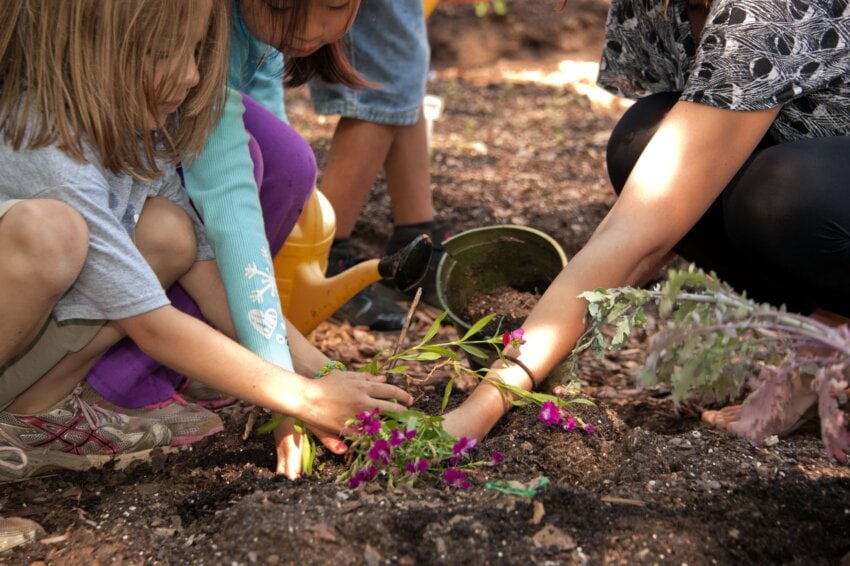From BTS to Squid Game, Korean influence has had a huge impact on the world and today, many are fascinated with even the Korean cuisine.
A few years ago, I started making some traditional and classic Korean dishes when I got an amazing idea. What if we could grow Korean vegetables in our garden?
Green Onions
 Green onions are an essential part of every single Korean meal. If you scan a few Korean cookery books, you’ll find that green onions often appear in almost all recipes. For example, as per some Korean food researchers, at least 90% of Korean soups will have green onions. Similarly, they are used in stewed, fresh, sautéed and fermented foods, as well as being used as a garnish or in marinades. Let me highlight just a few examples for you:
Green onions are an essential part of every single Korean meal. If you scan a few Korean cookery books, you’ll find that green onions often appear in almost all recipes. For example, as per some Korean food researchers, at least 90% of Korean soups will have green onions. Similarly, they are used in stewed, fresh, sautéed and fermented foods, as well as being used as a garnish or in marinades. Let me highlight just a few examples for you:
- Green Onion Kimchi (Pa-Kimchi)
- Korean Spicy Green onion salad
- Pajeon Korean green onion pancakes
- Roasted Green onions to make spicy Korean sauce
- Shrimp and green onion salad
Green onions are so loved by Koreans that Kellogg’s Korea even released green onion-flavored cereal. It was a unique flavor that everyone, without exception, has been coveting and so the limited-edition flavor was released during the year 2020.
Now, back to the subject, if you plan on growing this vegetable, make sure you follow these tips:
- It is not compulsory but highly recommended to start growing the seeds indoors for around 6-8 weeks. Once, they grow about 1-1½” apart, you can then set them in the garden.
- Green onions grow better and faster when they are exposed to direct sunlight. So, look for a sunny space where you can place the green onions for 5-8 hours per day.
- The soil needs to be fertile and well-drained. A few gardening experts suggest growing green onions in raised beds. For instance, you could sow the small seeds 1/4 inch apart in 3-inch wide bands or in a grid pattern, planting the seeds 1/4 inch deep.
- When it comes to water care, morning is the best time to water these vegetables. Green onions are very sensitive and susceptible to drought, so make sure to water regularly.
- If you are wondering about the best time to grow green onions, start sowing the seeds indoors during spring time. Or, you could also start in late winter.
Oh and I nearly forgot…if you want your green onions to sleep well, don’t forget to sing a lullaby – #BTS #Jimin 😉
White Radish, aka Daikon
 Also known as the Japanese radish or Chinese radish, the white radish is very popular in Asian cuisines. The vegetable looks like a huge and white plump carrot and is often eaten raw or pickled.
Also known as the Japanese radish or Chinese radish, the white radish is very popular in Asian cuisines. The vegetable looks like a huge and white plump carrot and is often eaten raw or pickled.
Korean food is said to be a mixture of the Chinese and Japanese cuisine, making it a blend of taste, variety, simplicity and health. And, the Korean pickled radish is a representative of this same Korean cuisine.
Most people assume that it can be quite difficult to grow white radish; on the contrary, I can tell you that there’s no easiest crop to grow than the white radish. You could sow the seeds and forget about them, but when you return, you’ll find large white roots (not that I’m actually asking you to forget them, okay?)
Daikon is a type of vegetable that can take a long period of time to mature due to its large size. However, it is still widely grown throughout the eastern region of Asia because it is a vegetable that requires little upkeep.
So, here are some basic tips to help you grow white radish at home:
- The white radish is a winter vegetable and hence it grows best when grown during cold winter seasons. However, it is important to note that in some countries, it can also be grown during mid-summer or early fall.
- They should be watered on a regular basis, but remember that they should be grown in a moist and not a wet soil.



